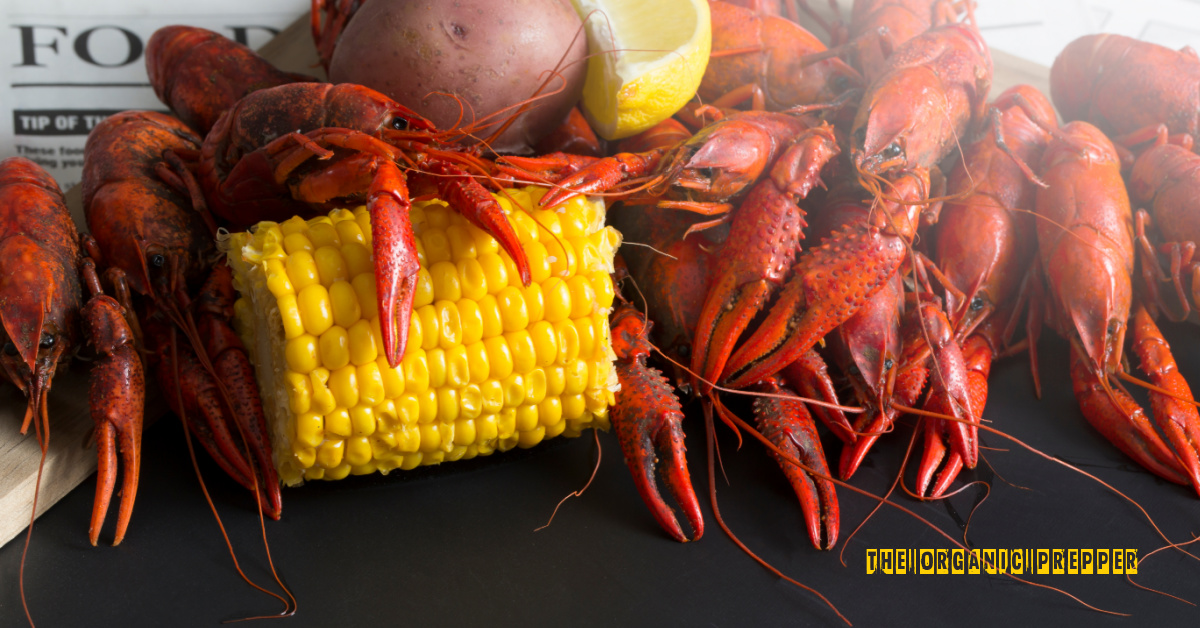In the depths of murmuring streams and verdant marshes, there exists a captivating creature—the crawdad. With their delicate appendages, enigmatic eyes, and armored exoskeletons, crawdads evoke a sense of primal wilderness within us. As passionate aquarists, it becomes imperative for us to master the art of crawdad care, ensuring their well-being and unlocking the secrets of their captivating world.

Image: www.theorganicprepper.com
Nurturing the Crawdad’s Aquatic Paradise
The crawdad’s habitat forms the cornerstone of its well-being. Provide a spacious tank that emulates the natural environment, boasting ample hiding spaces such as rocks, driftwood, or densely planted vegetation. Maintaining optimal water parameters is crucial, with a pH range of 7.0-7.5, temperatures between 70-75 degrees Fahrenheit, and a steady supply of dissolved oxygen. Regular partial water changes are essential to replenish minerals and eliminate waste.
Providing a Balanced Diet for Crawdad Vitality
Crawdads are omnivorous opportunists, relishing a smorgasbord of fresh vegetables, algae wafers, and occasionally, frozen bloodworms or brine shrimp. Ensure a varied and nutritious diet that mirrors their natural feeding habits. Supplement their intake with calcium-rich foods like cuttlebone or crushed eggshells to strengthen their exoskeletons. Avoid overfeeding, as excess food can lead to water quality issues and health problems.
Understanding Crawdad Behaviour and Social Dynamics
Crawdads exhibit unique social behaviors, forming complex hierarchies. Provide adequate space and hiding spots within the tank to prevent aggression. Males tend to be territorial and may engage in fights, hence, it’s wise to maintain a balanced male-to-female ratio. Handle crawdads with utmost care, supporting their entire body to prevent injury. Their pincers may appear formidable, but proper handling techniques can ensure safety for both the crawdad and the handler.

Image: finnsfishingtips.com
Comprehending Crawdad Life Cycle and Breeding
Crawdads experience a cyclical life process, molting several times to grow and shed their old exoskeletons. During this vulnerable period, provide secluded hiding spaces for the molting crawdad. Crawdads exhibit sexual reproduction. Fertilized females carry their eggs beneath their tails and hatchlings emerge as tiny replicas of their parents. Understanding their life cycle allows us to appreciate the complexities of these fascinating creatures.
Embracing the Challenges and Rewards of Crawdad Care
While crawdad care offers immense fulfillment, it also comes with its set of challenges. Maintaining pristine water conditions, managing aggression, and addressing potential health issues require dedication and knowledge. However, the rewards outweigh the difficulties. Observing crawdads engage in their natural behaviors, witnessing their growth, and enjoying their captivating presence in your home creates an unparalleled bond between aquarist and creature.
Expert Tips for Enhancing Crawdad Well-being
Consulting with experienced aquarists or veterinarians can provide invaluable insights into crawdad care. Implement a regular cleaning schedule, ensuring the tank remains pristine and free of debris. Introduce live plants to the tank, as they not only enhance aesthetics but also offer natural filtration and hiding spots. Monitor water quality diligently and make adjustments as necessary, as fluctuations can impact crawdad health.
FAQs: Unraveling Common Crawdad Care Conundrums
Q: How often do crawdads molt?
A: Crawdads molt frequently during their early life, with molting intervals decreasing as they reach maturity. The frequency can vary depending on the species and environmental conditions.
Q: Can I keep crawdads with other aquatic creatures?
A: While it’s possible to keep crawdads with certain fish species, exercise caution. Crawdads may exhibit aggression toward smaller fish or fish with long, flowing fins. Research thoroughly before introducing other species into a crawdad tank.
Q: What do I do if my crawdad is sick?
A: Observe your crawdad closely for any signs of illness, such as lethargy, decreased appetite, or abnormal behavior. Seek professional advice from a veterinarian or experienced aquarist to diagnose and treat any health issues promptly.
How To Take Care Of A Crawdad
Conclusion: An Ode to the Enigmatic Crawdad
The journey of crawdad care is an adventure in harmony and responsibility. By understanding their unique needs, providing a nurturing environment, and embracing the challenges and rewards, we unlock the captivating secrets of these aquatic wonders. As we immerse ourselves in the world of crawdads, we not only enhance their well-being but also embark on a path of education and profound appreciation for the intricate beauty of nature.
Are you eager to delve deeper into the enigmatic world of crawdads?


/GettyImages-1303637-two-way-mirror-57126b585f9b588cc2ed8a7b-5b8ef296c9e77c0050809a9a.jpg?w=740&resize=740,414&ssl=1)


